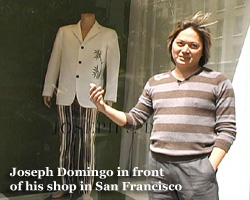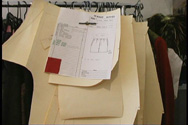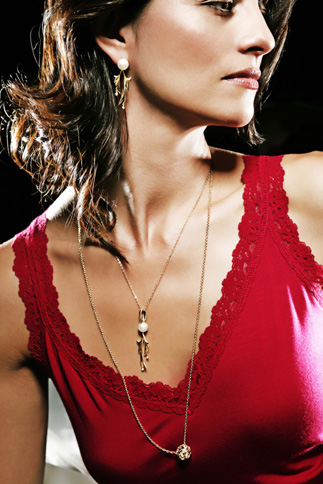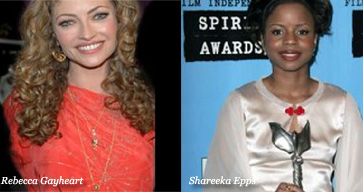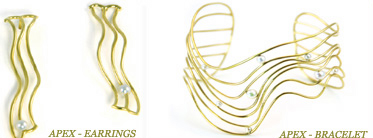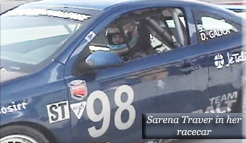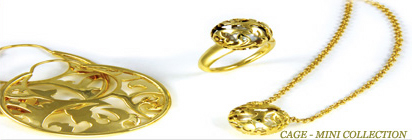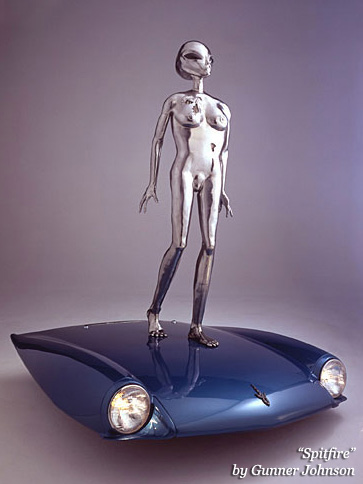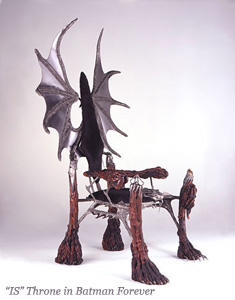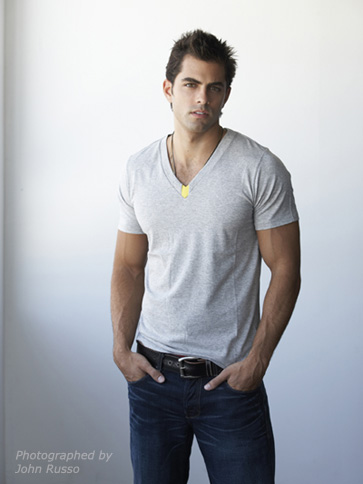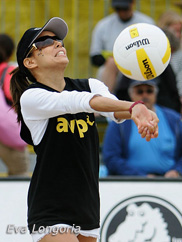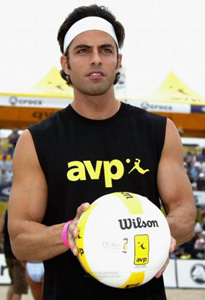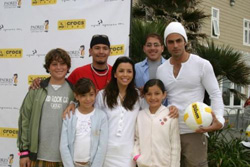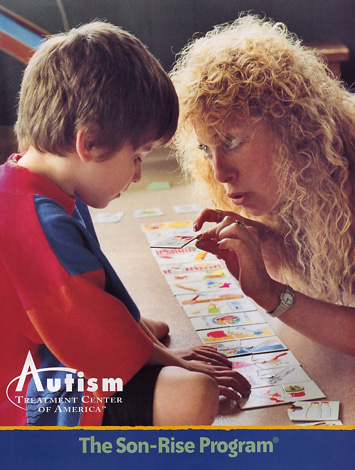 I was very moved when I heard about Raun Kaufman, who as a child was diagnosed with severe Autism Spectrum Disorder, and against all odds, his parents invented a radical form of treatment, which caused him not only to stop certain behaviors associated with autism, but to recover completely from the disorder. Over 30 years ago, the best-selling book Son-Rise was written about Raun, and an NBC television movie based on his recovery followed. In honor of Autism Awareness month in April, and the shocking rising number of children diagnosed with Autism Spectrum Disorder, Agenda Magazine has interviewed the man who fully recovered from that disorder and now heads the Autism Treatment Center of America, Raun Kaufman.
I was very moved when I heard about Raun Kaufman, who as a child was diagnosed with severe Autism Spectrum Disorder, and against all odds, his parents invented a radical form of treatment, which caused him not only to stop certain behaviors associated with autism, but to recover completely from the disorder. Over 30 years ago, the best-selling book Son-Rise was written about Raun, and an NBC television movie based on his recovery followed. In honor of Autism Awareness month in April, and the shocking rising number of children diagnosed with Autism Spectrum Disorder, Agenda Magazine has interviewed the man who fully recovered from that disorder and now heads the Autism Treatment Center of America, Raun Kaufman.
So you’re the person the book Son-Rise was written about.
It’s really an amazing position to be in because growing up I was the son. Now, as the CEO of the Autism Treatment Center of America, I get to guide the organization and help families, parents, and children in really the same way my parents helped me.
What would you call autism?
It is often called a disorder. You may have heard Autism Spectrum Disorder. And that’s because there are really a whole spectrum of different children and adults who have what you might call different levels of autism. Some children have no language at all and spend their entire day doing certain repetitive activities like lining up toy cars, whereas other children or adults might be much more verbal but nevertheless still have a lot of difficulty in communicating socially, making friends and making connections, as well as telling people how they feel about things. So there’s a whole huge, broad spectrum, and we work with a whole range of different children.
In your experience, which have you seen the most of, extreme cases or sort of the middle of the road cases like those children who are somewhat functioning in society?
We see a pretty even distribution in a lot of cases of children. We might work with a three-year-old who is totally nonverbal, or we might work with a 12-year-old who is also nonverbal. We might work with a 10-year-old who is speaking full sentences but really needs a lot of help with social communication. There is an increase in autism, which is now 1 in 150, and we definitely more recently have seen an increase of younger kids with their families come across our path who have gotten a diagnosis. A lot of them have lower levels of verbal communication and interaction—at least when parents first come to us. Obviously one of the things we’re most trying to help them with is to help their children to communicate more, connect with other people, form relationships with other people, by choice and by inspiration, versus doing that because they’re being trained with rewards like M&Ms and food, the more typical way to try to help autistic children to behave like more “neuro” typical children.
Tell me about when you had Autism Spectrum Disorder?
As a little baby I was faced with all these different ear infections and some of them quite life threatening. And then there was a whole period where it was sort of touch and go for awhile, and then finally it looked like I was doing better, and then all of a sudden they noticed I wasn’t speaking or communicating. I didn’t look at them, nor did I even allow them to touch me, and if they did, I was non-reactive. I didn’t respond to sound. People thought I might have been deaf. I spent all day doing repetitive activities like spinning plates over and over again and rocking back and forth and flapping my hands in front of my face. My parents knew this was not typical behavior, so they took me to specialists in an attempt to [ascertain] what was wrong with me. They were told what so many parents that we work with are told: “You’re an over-reactive, overprotective parent. Albert Einstein didn’t talk till he was four.” That’s the kind of message so many parents get. Eventually, as my disorder got more severe, and they saw more specialists, they told them that I was severely autistic, that I would never learn to talk or interact with them, that I would spin plates and rock back and forth 10-20 years.
So it’s really amazing what they did in the face of all of that. They really wanted to help me and reach out for me. And what they were offered, to try and get help for me, was very invasive kinds of treatments based on behavior modification techniques to stamp out my autistic behaviors, and then through repetitive action, I would be trained to have more “normal” behaviors. And they really felt like this just was not the way to go for me. A lot of these children were really being pushed and pulled, and it seemed to them that they didn’t yet understand all the dynamics of autism, but it seemed pretty clear to them that I wasn’t going to be brought into their world by force. And that, yes, they could probably get me to eat with silverware or dress myself, but that wasn’t what they were looking for. They were looking for a real connection, as well as helping me to want to make this real connection. So they began to create and pioneer this new program that is in the book—the Son-Rise program. They worked with me for actually a little over three years, and they started by doing something that was hugely controversial—it’s still one of the more controversial aspects of the program. Instead of forcing me to conform to this world, which I didn’t understand yet, they started by joining me in my world. So if I was spinning plates, instead of taking the plate away, which everyone told them to do, they actually got a plate, sat down next to me and spun those plates with me. And you could imagine people walking in seeing this and saying to them, “This is the worst possible thing you can do. You’re just going to reinforce the behaviors that you’re trying to change.” And they luckily—and I thank God for this—didn’t listen to that at the time. [My parents] really saw that first they wanted to let me show them the way in, so that they could show me the way out. They joined me in these behaviors as a starting point, and that was actually the first time that I started looking at them, including them in my play, acknowledging them, and connecting with them. It opened the doorway so that they could teach me how to communicate and talk and connect with people. And we’ve been doing this since the mid-’70s, when I was a kid, and this Autism Treatment Center, which started in 1983—we’ve worked now with thousands of parents from all different countries. When you join these children in their world, it doesn’t reinforce the behavior but actually helps create a connection with these children so that they don’t need to do the behaviors so much. They become more interested in the people that love them, like their parents.
Exactly how old were you when they started this radical idea?
I was 18 months. I really got into full swing by the time I was two, and then they worked with me. By the time I was five, I was pretty much a typical child. I went to regular schools, and no one knew about my past unless I told them or unless they read the book or saw the movie. I think it was very smart that they got on top of it as soon as possible. Early intervention is helpful, but I often hear people say, “Well, they started really early. If you don’t get a start that early for a child, there certainly isn’t much hope for them.” But we work with children who are 18 months, or 2-1/2 years old, children who are 10 or 12 or 15. We worked with this boy, for instance, who was 16 years old. He was completely mute and had no language. And his mother was told that there was a chance for him to learn language, but he was16 years old, so if he hadn’t learned it by now, he would never be able to learn it—his brain already formed. Six months into her Son-Rise program, her son after six months was speaking to her in full sentences. Now, he didn’t go on to fully recover in the way that I did, but he was able to communicate in full sentences and really tell his mother what he wanted, and have a connection with her and with other people—and that didn’t even start until he was 16. So we get children and adults who are capable of so much change because the brain is so plastic and so capable of growth and change, you know, in the same way that a 70-year-old stroke victim can relearn to talk and learn to use parts of his body.
So there is hope for a ten-year-old. My housekeeper has a ten-year-old grandson who is completely nonfunctional.
What does he do with himself during the day?
He rocks, he jumps, he’s super hyperactive. He’s constantly jerking up and down. He likes to be naked a lot. He won’t wear his clothes. He only knows one or two words. He seems to kind of understand when they tell him no. He’ll stop, but he has absolutely no speech of any kind. They were told it was because of his vaccinations, but do they even know what causes this?
Gosh, that is such a source of controversy in the media and in other areas, that they don’t ultimately know with any degree of certainty what causes autism. There’s a lot of speculation and a lot of theories. And fortunately there are a lot of studies to try and figure this out, but there’s no definitive explanation. There seems to be some evidence that points to a possible interaction between maybe genetic susceptibility combined with environmental triggers very early in life, the first two years of life. But even that doesn’t seem to be the exact cause for every single child. Some children appear to be born different. Some children have what’s called late onset autism, where they appear to be developing at or ahead of the average, and then age 1-1/2, age 2, age 2-1/2, 3 sometimes, they will appear to lose all their language and all their communication skills and become autistic. There are even different children that start at different points in their lives. And so there isn’t a totally clear understanding of what actually does cause it. And the problem is that it’s becoming so political and politicized about what does cause it, it’s hard to get a real sense of an objective look at what is causing it. But I will say this. Here at this organization, the Autism Treatment Center of America, we’re working with so many different families. We don’t really need to know what causes autism in order to be able to help these children now. I think it gets lost on the debate, for instance, on genetics and trying to find a series of genes that causes autism. But when we start to focus exclusively on that, you don’t help the children that have autism right now here today. Your housekeeper’s grandson… he’s ten years old, right?
He’s ten, yes.
Well, something that you did say about him that also could shed a little light on autism is it’s often treated as this behavioral issue. Where these children just behave differently and they need to be trained to behave the proper way. We see autism as something very different. First of all as a social communication disorder, but also – and this is why I wanted to highlight what you said about your housekeeper’s grandson—you said he likes to be naked a lot. Now, actually this is not uncommon at all in different children of various different ages. People say, “Well, why doesn’t he understand it’s important for him to be dressed, and it’s inappropriate when we have to teach him to keep his clothes on?” And yes, it absolutely is important to help children learn to keep their clothes on, of course, but there’s a reason why children like this little boy keep taking their clothes off. In many cases these clothes feel incredibly uncomfortable for them. They feel scratchy, itchy, they are overpowering in terms of what it feels like on their body. That might sound funny because it doesn’t feel like that to us, but a lot of these children have what is called a sensory integration disorder, which basically means what they’re seeing—what they’re hearing—what they’re feeling is entirely different than what we’re seeing, hearing, and feeling. For most of these children, just being in the living room is like being in the center of an airport for most of us. If you’ve ever spent three or four hours in the airport, you zone out after a while. You can’t really have a conversation. You just want to relax. That’s what these children’s day-to-day existence is like. And so a lot of what these children are doing might look unusual, but it is actually their attempt to have an environment that is not totally overpowering and totally over-stimulating. And actually that’s why one of the key principles of the Son-Rise program is to create this home base and sometimes school base specialized work/play environment. Where these children are in a very simple playroom with one other facilitator, and this playroom will probably be boring by the standards of a typical child. But for children with autism, they’re absolutely essential. These playrooms have zero distraction with very few pictures on the wall, no music playing, and toys, but no electronic toys in the room. It’s a room where these children can finally get a chance to breathe. Where they can start to build a connection with another person. And it’s also a room where we can call it a “yes” room because they’re never told no. They’re never told you can’t play with that, you can’t touch that, or you can’t do that. And that’s not an attempt to spoil a child. Instead, we’re trying to get in a situation where first we can build up trust and security and build up a child’s sense of feeling safe and loved so that they can then start to step outside their envelope and connect with other people. In order to do that, you need a very non-distracting simple environment where these children are first allowed to have control and a grasp of their own environment. And then we can start to help them communicate.
Do you have much memory of your experience?
I can remember things looking really different—distorted faces. It would look like I was looking at it through the wrong end of a pair of binoculars, or people looking very small and far away, like at the end of a tunnel. Or sometimes I would look at a wall and it would look like it was bending inward. And again this is consistent with a lot of the integration and the sensory processing issues that a lot of other children have. This is the way that I saw it and that’s mostly what I remember of the early days. I do have a little bit more memory in the very late part of my Son-Rise program when I was more verbal. I can remember my mom playing with me and laughing—I do remember that really fondly. And it didn’t feel to me like I was in a special program and something was wrong with me. It just felt like my mom was playing with me, and loved me, and we were enjoying ourselves. That’s what we really focus on, making it feel like that for all of the children. For them it feels like someone is loving them…and enjoying them, and they have the opportunity to play with things that are most exciting and motivating for them. And we turn that into a way of building more communication interaction.
Is your program very expensive?
If a parent really wants help for their child, they will want to also have the tools to be able to build the program to connect with their child. So they might come to what we call the Son-Rise Startup Program—the first program that a parent or a professional might take. And that’s a week-long course where a parent will come to our 100-acre campus in Sheffield, Massachusetts, for an all-inclusive week. They would have all their meals and free room and board and classes all day. They would be learning all the key elements of the program. The parents are the absolute keys to this program, the best resource for the child because no one has the kind of lifelong dedication and love that a parent has. They would pay roughly $2,200 for that program. Then there are other, more advanced programs. They could get phone consultations. They can have someone come out to their house. The cost structure really varies for them. We’re a nonprofit organization, so we have people who donate money every year just to help these parents. So what happens is you have some parents who are paying $2,200 to come for the week, and you have other parents who are paying a whole lot less because they’re getting financial aid and scholarships that we’re giving them because we’re able to have that with people donating to us to help these parents. At the end of the day, the parents are able to come regardless of their financial situation. They can apply for as much aid as they need.
What is the parent’s responsibility in all this?
The parent is going to make the biggest difference in a child’s life. When and where a parent actually changes the way they are with their child…that tends to have the biggest effect on how the child responds. One of the areas which I think is the most overlooked in autism treatment (we spend 50% of our time on this in the startup program with the parents) is their own attitudes and comfort levels with their child and their child’s condition. When you first hear it, it’s like a soft skill. Does that really make an actual difference in how a child is able to communicate and build skills? Teaching them the specific techniques of the Son-Rise program, like how to join with the child, how to use motivation to teach socialization, how to set up the special play room, all of that is absolutely critical and essential, of course. But teaching a parent what to do without really teaching them how to do it makes what they’re doing not that effective. And what we see is what is the biggest and affecting thing is how comfortable the parents are and what their attitudes are, and what their beliefs are about what their child is capable of. I hear this from parents that at the end of a startup program—(and this is before their child has improved at all—they haven’t even gone home yet to implement it) is that they feel like they see their child totally differently. What we see, when someone is working with a child with autism who is for any reason uncomfortable, stressed out, or a little frustrated, the child can pick up on a lot of these signals. The child doesn’t understand that the person has good reason for feeling this way. All that child knows is this is an increase of stress, and they want to move away from that. They might do that by “tantruming” more or retreating deeper into their world. At the same time, when a person is really comfortable, excited, or is feeling really at peace when they’re working with the child, that child becomes more interactive and more interested in that person, which helps with the learning process.
What do you think of these other forms of treatment compared to yours? Do they work?
One-half is the educational-based treatments, where someone is working with the child, trying to help them learn skills, communicate, do something. The other kinds of treatments are biological treatments: medical, dietary intervention, supplementation, etc. A lot of these more biological treatments work really well in tandem with the Son-Rise program, and I am completely supportive of quite a lot of them. One of the first things we advocate to the parents who are doing the Son-Rise program is start looking at dietary intervention. One of the areas is to remove gluten (found in complex proteins, wheat and some other grains), and Casein (found in complex proteins in dairy). It is widely known that removing these foods will stop some of those biological habits going on in the children’s body, and allow them to connect and adapt more. Unfortunately, there are still parents who are told by their physicians what their child eats is not going to affect their neurological disorder. But physicians who are involved with autism really see the research through clinical practices that diet absolutely has a huge effect on how drastic these children are. Many of these children have immunological, gastrointestinal issues, and deficits going on. Those treatments can actually accelerate what a child is doing in the Son-Rise treatment program.
The other kinds of programs that are more educational-based, those are really different. The most popular way of treating autism educationally is through a program called ABA. Applied Behavior Analysis has been around for quite a while, and is touted as the only program with research backhand. The research was not only done in 1987—and those who tried to replicate it in the ’90s were unable to replicate those results—but also it was done with a very small number, 16 or 17 selected children who had this research done on them. There is no program out there right now, that with total honesty and truth, can say, “Our program is 100% proven by research on large groups of children.”
What programs are the schools implementing?
I mean absolutely no disrespect by saying this, but if you talk to most school officials and teachers—and you really have them on an off the record—in honest conversation, they will in most cases tell you they have no idea what to do with these children. Not because they don’t want to help, just because they have no idea how to handle them, and how to help them.
How many Rain Man cases do you get?
We have worked with children and adults who are like Rain Man, but it is incredibly rare. The term for those people is Autistic Savant. We more often get children with varying levels of abilities. When Rain Man came out, there weren’t as many cases of autism as there are today.
Do you have any idea why it is rapidly growing? It’s like an epidemic.
There has been an explosion. When I was little, it was 1 in 10,000, and now it’s 1 in 150. There is an increase in diagnosis because there is a little bit of awareness, but that doesn’t count for getting us to 1 in 150. California has been using the same diagnostic criteria since 1990, and they’ve seen a many-fold increase of autism just in that state. What’s causing it? There is a lot of uncertainty and controversy. The only thing that I would put into that debate is if it’s entirely genetic—you can’t have a genetic epidemic. The rates should be roughly the same as they were 20-30 years ago. It could go up by 1 or 2 percent, but nothing like it is now. My belief then is in order for it to go up at that kind of rate you have to have a contributing environmental trigger. There could be a host of different ones that affect different children. Even if it is genetic, you’d have to have interaction with that genetic predisposition with something in the environment. Otherwise, how do you get an increase of that magnitude?
So often I see in the media messages being given to parents and by professionals, doom and gloom about their children. I think hope leads to action, and that’s how these children are helped. Parents have been able to do amazing things with their children if they’re just given a chance. Unfortunately, there has just been this continual stream of “Your child is going to have this miserable life.” In the ’90s when autism was on the rise, we were starting to work with more people. I thought once more if the [success stories] got out, and once people saw what’s possible for these children, this [negative thinking] would change. And yet I literally keep seeing everyday that nothing’s changed. I struggle with the fact that in spite of what all of these parents are doing and have done with or for their children, it makes them out to be pathetic creatures who can’t help their children, when it’s the exact opposite of that. Even when I hear people say things like “You must have been misdiagnosed because you recovered,” or other kids like Kyle, one who was recently in the news, people said the same thing about him. Everybody doesn’t have to do the Son-Rise program, but let’s not discount what these parents are doing. Can we at least give those parents some respect and credit for what they did? And give Kyle some respect and credit for the strides that he’s made without having to keep them down in order to make a point.
Is there only one autism treatment center for your program?
There is only one Autism Treatment Center of America. However, there are parents running these small-scale programs all over the US and in other countries. We do a program two times a year, one in England, where we fly our team of teachers out to the UK to run exactly the same program that we run here. I also do lecture tours in the UK and in the US, whenever we can get the funding for it. Those are usually free lecture tours. We’re trying not to charge the parents. In America we actually had a wealthy Son-Rise set of parents who were excited about their own child’s progress. They funded 100 low-income families to come for free to a startup program that we ran in New York City. So we got off of our campus to reach out to other parents and other families, but in most cases, parents and families are coming here and then they’re getting ongoing help from a distance that they continue to run their programs.
To learn more about the Autism Treatment Center of America, visit their website: www.autismtreatmentcenter.org. They also offer a free 30-minute consultation call to ask questions about how to apply the principles to your child. Don’t believe everything you hear in the news. Children are recovering from Autism Spectrum Disorder.
Transcribed by Lisa A. Trimarchi
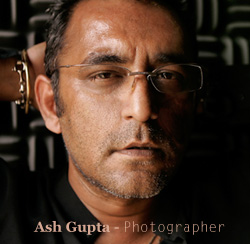
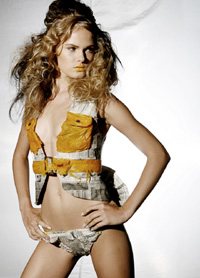
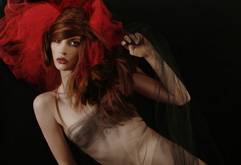
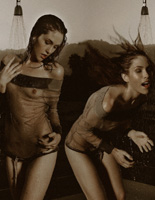
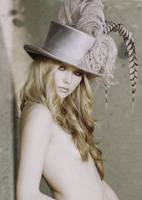
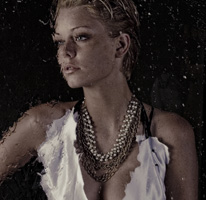
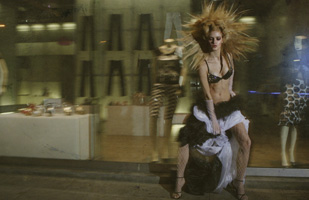
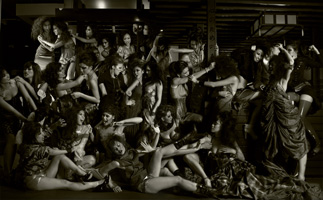

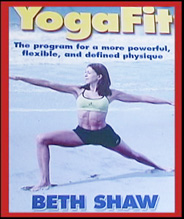
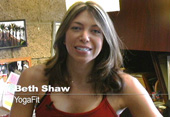

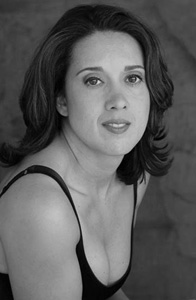


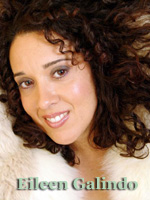
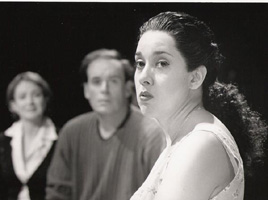
 Lastly, where do you see webisodes going in the future?
Lastly, where do you see webisodes going in the future?
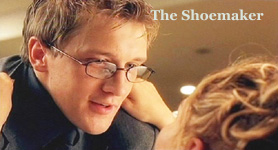
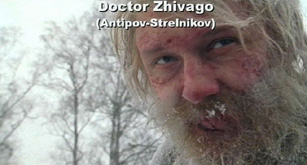
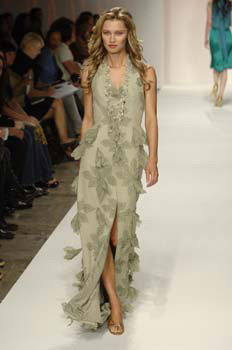
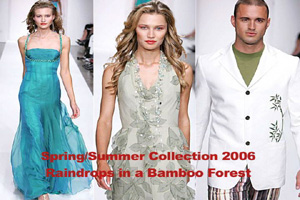
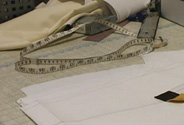
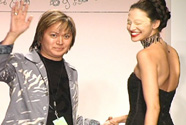
 What we did for the models.
What we did for the models.